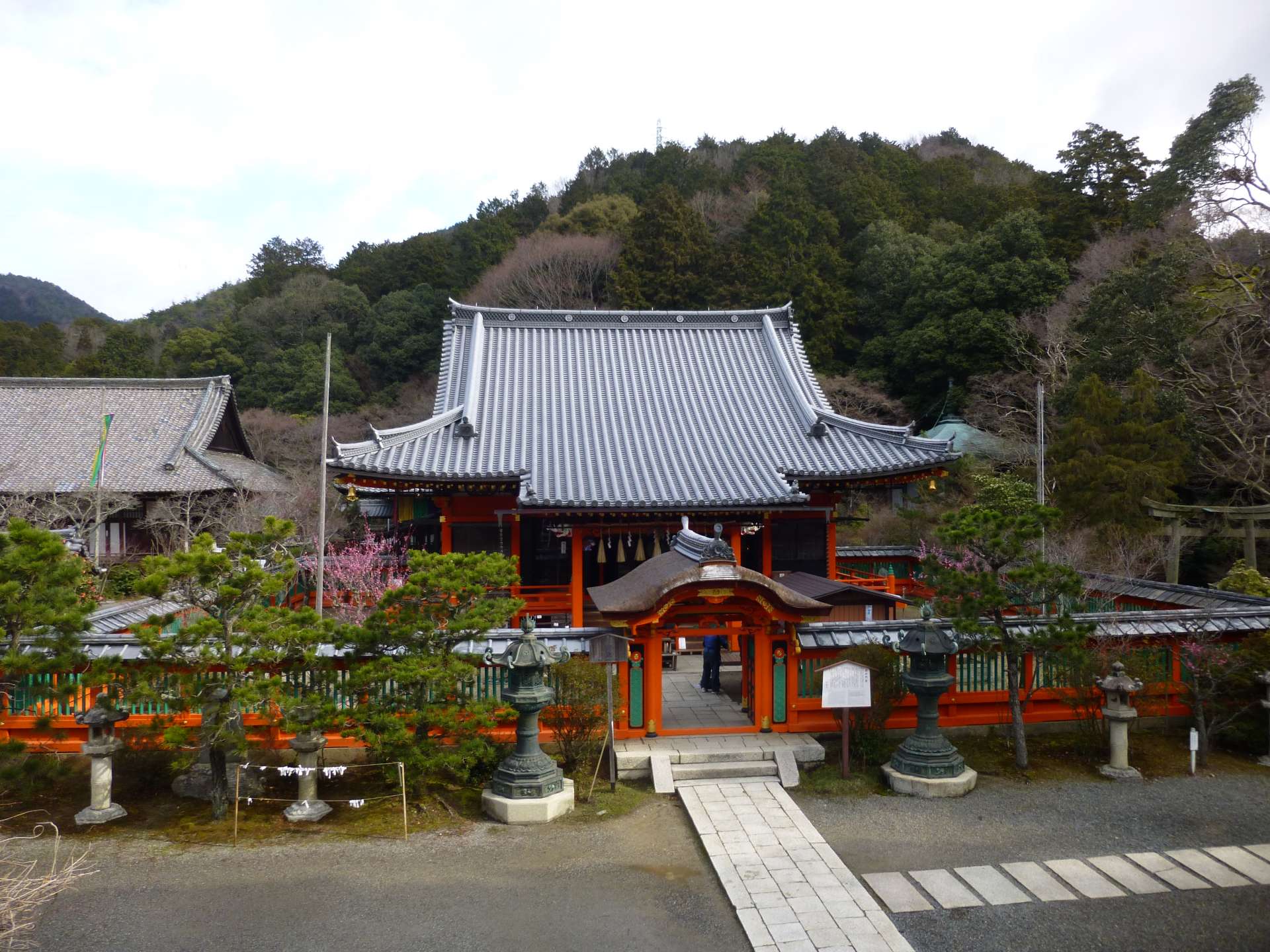
Verified [Verified] denotes information that has been published with confirmation of its owing parties.
Bishamondo Monzeki
A prestigious temple of the "Tendai Sect Kyoto Gokashitsu Monzeki," known for its cherry blossoms in spring and autumn foliage.
Rooted in the Izumo Temple, founded by Gyoki in 703, Bishamondo in the Yamashina ward of Kyoto is dedicated to Bishamonten, one of the Seven Gods of Fortune, and is one of the "Tendai Sect Kyoto Gokashitsu Monzeki."
Passing through the vermillion Niomon Gate, the main hall, established in 1666 and enshrining Bishamonten, was built with donations from the Tokugawa family, incorporating the architectural style of Nikko Toshogu Shrine, which enshrines Tokugawa Ieyasu. Its vivid colors and decorations are strikingly different from other Kyoto temples. The temple houses valuable cultural assets, such as the "Eight-Direction Glaring Dragon" painted on the ceiling of the Reiden and the sliding doors in the Shinden, painted by Kano Tanyu's adopted son, Kano Eishin, using a reverse perspective technique that makes the paintings appear to move when viewed from different angles.
The precincts bloom with around 80 cherry trees, including a weeping cherry tree over 150 years old, in spring and are colored with autumn leaves leading up to the Imperial Messenger's Gate in fall. The Edo-period strolling garden, Bansuien, which changes its expression with the seasons, from fresh greenery to snowscapes, is also a reason for its popularity.
Highlights
-
A Tendai Sect temple dedicated to Bishamonten.
-
The main hall, donated by the Tokugawa family, features luxurious decorations reminiscent of Nikko Toshogu Shrine.
-
Enjoy seasonal flowers and plants throughout the year.
-
The Edo-period garden, Bansuien, is popular for its changing seasonal expressions.
-
The dragon painted on the Reiden's ceiling and the mysterious sliding doors are also must-sees.
Photos
-
![The main hall's bright colors are eye-catching.]()
The main hall's bright colors are eye-catching.
-
![Well-known as one of Kyoto's prime cherry blossom spots.]()
Well-known as one of Kyoto's prime cherry blossom spots.
-
![The precincts are adorned with stunning autumn foliage.]()
The precincts are adorned with stunning autumn foliage.
-
![The Edo-period strolling garden, "Bansuien."]()
The Edo-period strolling garden, "Bansuien."
-
![The Niomon Gate, with its large lantern and guardian statues, welcomes worshippers.]()
The Niomon Gate, with its large lantern and guardian statues, welcomes worshippers.
-
![The unique sliding doors appear to move when viewed from different angles.]()
The unique sliding doors appear to move when viewed from different angles.
Official FAQs
Frequently Asked Questions have been vetted and answered directly by each listing.
Q
Do you have pamphlets in other languages? (If so, please also inform us of the supported languages)
English pamphlets available.
Q
Are there Goshuin (temple stamps)?
Yes, hand-written in a book for 400 yen, various pre-written types range from 400 to 1,200 yen.
Q
Is there parking available?
Yes, about 10 spaces. The ground is opened up during busy seasons.
Q
Are coin lockers available?
Not available.
Reviews
Details
- Name in Japanese
- 毘沙門堂門跡
- Postal Code
- 607-8003
- Address
- 18 Anshuinariyamacho, Yamashina-ku, Kyoto City, Kyoto
- Telephone
- 075-581-0328
- Closed
- Free to walk
- Business Hours
- From March to November 9:00am - 5:00pm (Admission allowed until 4:30pm), From December to February 9:00am - 4:30pm (Admission allowed until 4:00pm)
- Admission
-
Entry fee From May 2024 Adults 700yen, High school students 400yen, Elementary school students 300yen
※Until the end of April 2024 Adults 500yen, High school students 400yen, Elementary school students 300yen - Access
- About 20 minutes walk from JR, Municipal Subway Yamashina Station or Keihan Keizu Line’s Keihan-yamashina Station.
- Credit Cards
- Not accepted
- Official Website
- Official Website (English)






